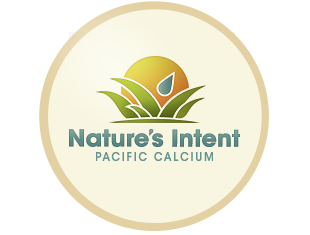What is lime?
Lime is the term used for crushed limestone. Limestone is mined as rock and is crushed mechanically to varying degrees of fineness. In most cases, lime is comprised primarily of calcium carbonate (CaCO3), also called calcite.
Some limestone may contain relatively high (5% to 12%) amounts of magnesium carbonate (MgCO3) as well as CaCO3. These materials are called dolomites. Dolomite should only be used in situations where soil analysis has shown a definite need for magnesium.
Lime and soil acidity
Soils generally become acidic as a result of organic matter decomposition and/or by the addition of ammoniacal (NH4) nitrogen fertilizers. The hydrogen ions produced by these processes displace calcium, magnesium, and potassium from the surfaces of the soil particles. These free salts are then leached from the upper regions of the soil profile by water moving downward through the soil. As the concentration of the hydrogen ions in the soil increases, the soil acidity increases. The soil acidity is expressed as soil pH: the lower the soil pH, the greater the soil acidity.
As soils become more acidic, the availability of nutrients essential for crop plant growth changes dramatically. Phosphorus is maximally available at soil pH 6.5. Decreasing soil pH to 5.5 reduces available phosphorus to 50 percent. Available molybdenum is markedly reduced. Calcium availability may be severely restricted from some crops. Copper, iron, boron, and zinc become more available at lower soil pH. At pH values below 5.5, available manganese and aluminum may build to toxic levels. The bacteria that convert ammonium nitrogen to nitrate function best at soil pH values above 6.0. Decreasing soil pH diminishes activity of these bacteria and other beneficial fungi. Lower soil pH will also suppress the activity of nitrogen-fixing bacteria living in symbiosis with legumes. Many disease-causing fungi are more active in soils with lower pH values.
The addition of lime to soil lessens the acidity. Lime adds calcium, a needed nutrient to reduce the concentrations of hydrogen ions which is the cause of low soil pH. The addition of lime makes potassium more efficient in plant nutrition and increases available molybdenum. Lime increases the rates of breakdown of soil organic matter, thus releasing available nitrogen into the plant root zone. Lime also reduces the need to fertilize.
How much lime is needed?
Only a soil test can determine the amount of lime needed to neutralize soil acidity. The standard soil pH test will only indicate whether or not lime may be needed but not how much lime is required. Therefore, the soil test must include a lime requirement test to determine the needed quantity of lime.
Many state and commercial soil testing laboratories can determine the lime requirement of a soil. Soil pH value alone is not sufficient. A clay soil can require as much as three times the amount of lime as a sandy soil with the same pH.
Important factors in liming
Addition of phosphorus with lime frequently results in much larger yield increases than liming alone.
While toxic levels of aluminum can be largely eliminated by raising soil pH to about 5.5, further liming to about pH 6.5 will usually increase yields even further, possibly because of increased bacterial activity which yields more nitrogen, molybdenum, and other nutrients.
Liming of soils to pH of greater than 6.5 is often detrimental to plant growth, probably due in part to reduced availability of essential micronutrients.

